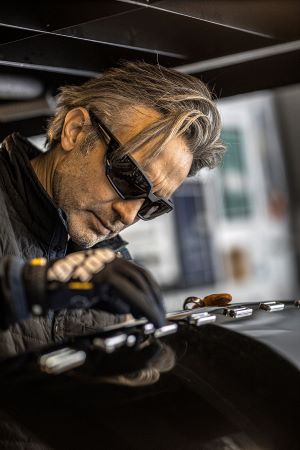Five Steps to Preventing Eye and Face Injuries
Regardless of the industry – heavy manufacturing, pulp & paper, food & beverage, construction – eye and face protection is an absolute must, but is also sadly lacking. In fact, eye and face protection has remained the one of OSHA’s Top Ten most frequently cited standards for years. In 2021, it was ranked 8th. In 2022 and 2023, this cited standard was ranked 9th.
Many of the cited standards in OSHA’s Top Ten remain there because of “technical” issues, such as lack of an adequate written plan, lack of an effective risk assessment document, or lack of documented training. For eye and face protection, however, most of the after-the-fact citations are related to actual preventable injuries from the lack of PPE or wearing the wrong PPE for the hazard.
This is inexcusable. Statistics, training, and articles for 20+ years repeatedly describe eye and face injuries as “preventable” had the proper PPE been provided and used. From mild irritation, to burns, to total blindness, these preventable and senseless injuries continue to occur today.
Eye and face injury prevention
 Protecting employees and visitors from workplace eye and face injuries is simple. Case studies and compiled injury data address the risks, the protective measures needed, and the solutions that effectively eliminate employee eye and face exposures.
Protecting employees and visitors from workplace eye and face injuries is simple. Case studies and compiled injury data address the risks, the protective measures needed, and the solutions that effectively eliminate employee eye and face exposures.
As calculated by the OSHA Pays estimator, the employee and the employer incur significant costs every time an eye or face injury occurs. A loss-of-vision injury exceeds $150,000 in real dollars in addition to the life-altering change in the employee’s quality of life. Neither the employer nor the employee wants to experience such a loss. Yet, too often, both are willing to play the odds that such a catastrophic injury won’t happen. When it does, there is no second chance, no do-over.
Eye and face injuries can be dramatically reduced by following these simple five steps:
- Conduct an effective risk assessment that identifies the hazards in the general work area and specific tasks. Include front-line employees who perform the work in the assessment process, so all hazards are addressed.
- Identify protective and preventative measures that eliminate or reduce the exposure to the hazard(s).
- Identify and obtain the appropriate PPE that is matched to the hazard(s) and include front-line employee engagement.
- Train employees and supervisors on the identified hazards and the protective/preventative measures.
- Support and encourage employees and supervisors in safe work practices and lead by example.
These five steps promote and demonstrate safety as a value while building an effective safety culture of best practices. Employee engagement throughout the process builds buy-in and trust. Establishing proactive, leading metrics encourage employee participation and recognition.
Simple, effective solutions
Technology improvements adopted by PPE manufacturers over the past ten years have increased protection levels and provided greater comfort for the wearer. The days of having to wear poor-fitting or painful, uncomfortable protective eyewear are over (at least, they should be).
In addition to technology improvements, there are numerous no-cost or minimal-cost resources available to help employers conduct effective risk assessments and match PPE solutions to the appropriate hazards.
If an employer is overwhelmed or doesn’t know how to conduct an effective risk assessment, they can tap resources such as the insurance carrier (both liability and workers’ compensation), safety associations, safety distributors, PPE manufacturers, and even regulatory agencies (though this would be a risky option).
For additional assistance, third-party safety professionals and auditors can offer a second set of eyes to review workplace and task hazards. These resources generally come at a cost, but may be worth it for those who want absolute certainty that their assessment is accurate.
Your PPE partner
Mechanix Wear is a global PPE manufacturer with the expertise to assist employers with their safety culture and program. Mechanix Wear offers eye and face protection incorporating the latest technology and with its own in-house (not copycat) engineering designs that provide excellent fit, comfort, and function. Mechanix Wear also offers a no-cost, no-obligation partnership with employers that puts its expertise on the line, helping employers conduct an effective risk assessment.
Since Mechanix Wear is neither a regulatory agency nor an insurance policy provider, its experts focus on helping the employer and employees identify hazards and offer solutions that match the hazards without risk of a citation or premium increase.
Through its renowned TRACK program, Mechanix Wear includes a no-obligation trial with its PPE solutions so front-line employees can experience using the PPE and the employer can experience finding how well the PPE works prior to having to make a purchase. This one feature on its own saves the employer from the trial-and-error of purchasing the wrong PPE and demonstrates to the front-line employees that their input matters, increasing the likelihood of the right PPE being worn.